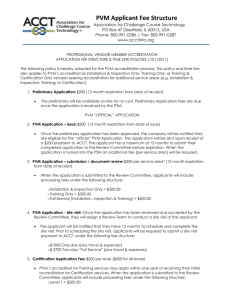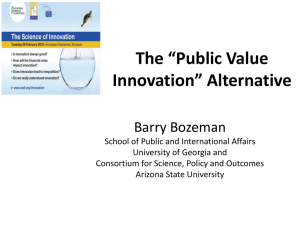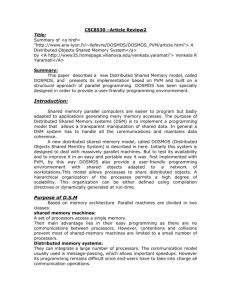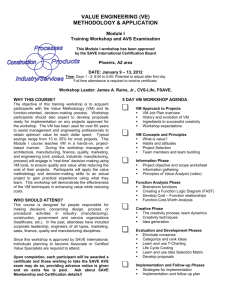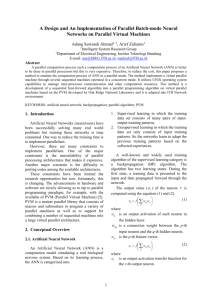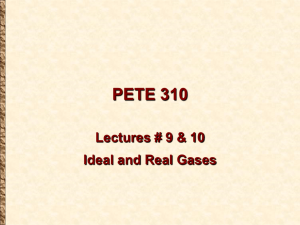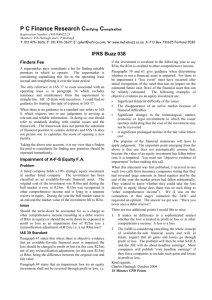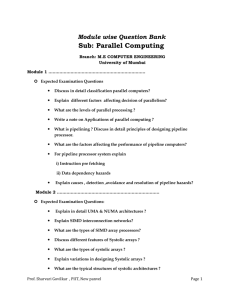White Paper - Skillpower
advertisement
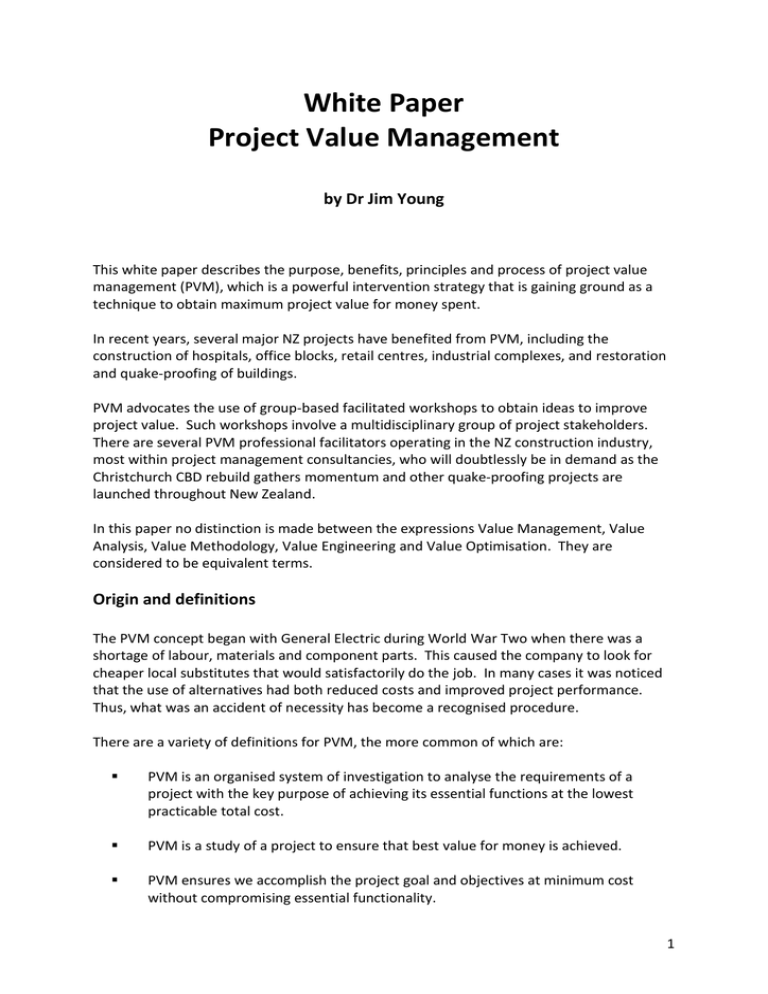
White Paper Project Value Management by Dr Jim Young This white paper describes the purpose, benefits, principles and process of project value management (PVM), which is a powerful intervention strategy that is gaining ground as a technique to obtain maximum project value for money spent. In recent years, several major NZ projects have benefited from PVM, including the construction of hospitals, office blocks, retail centres, industrial complexes, and restoration and quake-proofing of buildings. PVM advocates the use of group-based facilitated workshops to obtain ideas to improve project value. Such workshops involve a multidisciplinary group of project stakeholders. There are several PVM professional facilitators operating in the NZ construction industry, most within project management consultancies, who will doubtlessly be in demand as the Christchurch CBD rebuild gathers momentum and other quake-proofing projects are launched throughout New Zealand. In this paper no distinction is made between the expressions Value Management, Value Analysis, Value Methodology, Value Engineering and Value Optimisation. They are considered to be equivalent terms. Origin and definitions The PVM concept began with General Electric during World War Two when there was a shortage of labour, materials and component parts. This caused the company to look for cheaper local substitutes that would satisfactorily do the job. In many cases it was noticed that the use of alternatives had both reduced costs and improved project performance. Thus, what was an accident of necessity has become a recognised procedure. There are a variety of definitions for PVM, the more common of which are: PVM is an organised system of investigation to analyse the requirements of a project with the key purpose of achieving its essential functions at the lowest practicable total cost. PVM is a study of a project to ensure that best value for money is achieved. PVM ensures we accomplish the project goal and objectives at minimum cost without compromising essential functionality. 1 PVM is a structured, systematic and analytical process that seeks to achieve all necessary project functions at the lowest cost consistent with the required level of project performance. PVM is useful for all projects, public and private, but best results have been achieved with more expensive infrastructure and construction projects, which typically involve large numbers of disparate groups. Higher-profile and politically sensitive projects are also popular candidates for PVM intervention. In practice, the decision to apply PVM is often made when it is realised that the cost of the project will considerably exceed the budget or seriously erode the profit margin. However, PVM can benefit any project. Some examples of effective PVM are: Russian liquid-fuel rocket motors intentionally permit rough, although leak-proof, welding. This reduces costs by eliminating grinding and finishing operations that do not influence the motor’s function. Japanese vehicle manufacturers have active PVM programmes to minimise the variety of components in their products to reduce inventory, tooling and assembly costs. As a result of a PVM exercise an Australian supermarket construction project opted for cheaper local sources of supply and JIT delivery of materials to shorten leadtimes and avoid on-site inventory costs. NASA space shuttle specifications were relaxed for non-critical components to save cost without detriment to safety or functionality. PVM focuses mainly on value improvements, where value is proportional to the ratio of function over cost. Function is what the project is expected to achieve, its performance, what it must do, but not what it is. Value is improved by increasing the worth of functions relative to the cost involved in doing so, where: Value = Function / Cost or Value = What you get / What you pay for The idea is that we should do nothing on a project unless it adds value and that value needs to be maximised. We should frequently ask, “Does the benefit of this function or feature justify its cost to the project?” In these circumstances value might be defined as: Value = Benefits - Costs 2 Essentially, greater project value is achieved by any or all of the following three measures: Improving function while maintaining cost. Maintaining function while reducing cost. Improving function while reducing cost. Function concerns what something does, not what it is. For example, a screwdriver can be used to “stir paint”, but PVM might substitute a stick to do a better job at less cost. The function of a pencil is to “make marks” which might lead to identifying what else can make marks better and/or cheaper. Notice that the function is described using only a verb and a noun. The verb (“make”) tells us what it does and the noun (“marks”) tells us what it does this to. PVM benefits PVM is about project cost efficiencies, productivity improvements and issue resolution, achieved through practices such as: Clarifying project stakeholders needs and user requirements versus their wants, and then setting priorities for those needs. Verifying the project purpose and the appropriateness of objectives for scope, time, cost, safety and quality, and optimising design solutions accordingly. PVM requires we enhance value without compromising project objectives. Challenging those project selection criteria and planning assumptions in particular that may be unrealistic and/or cause significant risk. Some assumptions masquerade as facts. Improving teamwork, cooperation and communications among project stakeholders and thus minimising the likelihood of confusion, conflict and misunderstandings. It’s about resolving ambiguities and misconceptions, clarifying project roles and responsibilities, and providing a shared understanding of success criteria. Identifying non-productive/high-cost elements and evaluating better/cheaper project inputs and outputs, and more simple, effective and efficient processes. Generating and evaluating better/cheaper sources of labour, materials, plant, equipment and components. Eliminating duplication, wastage, inventory, unnecessary expenditure and redundant features, materials, tasks and deliverables that don’t contribute value, and thus save time, materials, money and energy. 3 Reducing cost, without loss of functionality, usually resulting in an improved profit margin and/or a more competitive bid. Improvements to project value may justify a cost increase if performance is sufficiently enhanced. Promoting risk management, quality, sustainability, efficiencies, wider ownership of project outcomes and greater commitment to project implementation. The benefits of PVM are likely to diminish over the project life and the cost of implementing PVM is likely to increase over the same period. Thus, the earlier PVM is applied the greater the value obtained. Hence the need to hold the PVM workshop earlier rather than later in the project life cycle. However, if need be, subsequent workshops may be held. The workshop results usually positively affect everyone associated with the project, including: Clients who are interested in achieving the best value for money. Users who want the project to meet their needs as effectively as possible. Designers who are keen to meet the expectations of the client and users and to ensure that the planning and design principles and performance requirements for the project are understood, evaluated and appropriately applied. Project managers seeking to ensure that the project is managed within time, quality and cost constraints. Contractors aiming to provide services in such a way that they receive an adequate profit and future business. PVM costs and challenges While PMV generally returns savings well in excess of its cost, the following expenses nevertheless need to be considered prior to commissioning the study: Engaging a facilitator. Each participant’s attendance. Venue hire. Administrative support. The decision to conduct the PVM study may be influenced by its cost and also by the following factors: Perceived potential for cost savings or improved outcomes. Desire to overcome project problems. 4 Need to provide rigorous review or audit. Need to optimise the balance between capital, operating and maintenance expenditure. Need to accelerate the project. Complexity, high cost or innovative nature of the project. Number of stakeholder interfaces. PVM is not without its challenges, some of which are: Finding a suitable date or dates when the PVM team members are available to meet. Possible delay to the project while the PVM study process is undertaken that may create issues particularly for time-driven endeavours. Inadvertently excluding important stakeholders from the process. The “real” front-end cost compared to the “notional” downstream savings may persuade some stakeholders that PVM is not a sound investment – the benefits are not assured. Threat to designers, planners and others directly involved with the project whose professional credibility might suffer when defects, deficiencies and waste is identified. And some employees, contractors, consultants and suppliers may no longer be needed or their work prospects diminished as unnecessary project activities are eliminated. PVM cost savings may prove to be short-term false economies when whole-of-life product operating, repair and maintenance costs, and the possibility of product obsolescence, are considered. Sometimes the best ideas for project value improvement can be the most risky and if implemented could jeopardise project success. PVM principles While adherence to principles does not guarantee success, they are generally hard-earned and ignored at our peril. Some important PVM principles are: The process needs to be orchestrated by a skilled, cost-focused and suitably qualified facilitator who possesses the appropriate mix of hard and soft skills for 5 effective facilitation, and who is familiar with the type of project involved and has no vested interest or any involvement with the project to ensure their necessary objectivity. The choice of facilitator is fundamental to the success of the study. It is similar to report editing and proofreading, which is usually better undertaken by someone other than the writer and preferably someone with an open mind, the requisite expertise and credibility, and who has positive intentions. Senior management need to visibly support the PVM workshop and process to help ensure it has appropriate credibility and the necessary authority. They may also participate as appropriate. And we welcome influential champions to ensure recommendations are seriously considered. PVM flourishes best in an environment where people are open, trusting, willing to collaborate, familiar with applying creative and lateral thinking to problem solving, and are comfortable with change. PVM should be applied as early as possible during the project life cycle and preferably prior to project execution. After project execution the cost of undertaking changes to the project usually increases significantly as there is less opportunity to make beneficial changes without causing significant disruption, although some later changes may also be cost-effective. The PVM team need to be credible representatives of their stakeholder groups and possess the necessary decision-making authority, appropriate expertise, and a willingness to interact, collaborate, accept new ideas, and forego any personal prejudices and pet solutions. PVM should focus on those more costly and complex functions that are most likely to yield significant savings through simplification strategies. Issues of health and safety, sustainability, design quality, buildability, operation, maintenance and disposal should all be considered during PVM studies. 6 PVM is about enhancing value and not simply about cost cutting, although cost saving is a welcome component. However, cutting cost without proper analysis may lessen value, functionality or quality. Whole-of-life costing is an important element of PVM. Thus, the study should consider all costs relating to the deliverable from project conception to product disposal. PVM needs to be integrated with project risk management to ensure that valueadding initiatives do not create risk beyond what the project can tolerate. Key project stakeholders, particularly the project sponsor/owner, project manager, project design team, contractors and users/occupants need to be thoroughly briefed about the PVM purpose and process before its implementation and their timely input welcomed and their apprehensions discussed. Typically they or their representatives participate in the PVM workshop and those key stakeholders who do not participate should be kept informed. Like a project audit, the study is an objective assessment that in this instance is designed to identify cost-savings and/or functionality improvements. PVM is not a stick to beat people with, and expressions such as audit, evaluation, appraisal and assessment might be avoided in favour of terms such as study or review. PVM process Typical activities undertaken in a comprehensive PVM study project are described briefly here: 1. Prepare for study. This first step is when the organisation selects the project for PVM study, decides the objectives and scope of the study, prepares study terms of reference, obtains authority to undertake the study, contracts the facilitator who will typically agree the composition of the study team, review the PVM methodology and timetable, confirm logistic needs, check workshop venue suitability, and further study the target project. 2. Gather information. Prior to the workshop the facilitator will identify information needs and how these might best be gathered. Typically the facilitator would obtain and study whatever project documentation available including project planning assumptions, success criteria, feasibility study, business case, charter, designs, drawings, specifications, work breakdown structure, estimates, risks, project plan, and importantly, key issues that need resolution. The facilitator might also have preliminary discussions with the project stakeholders – client (owner), customers (users/occupiers), sponsor/owner, project manager, project team members, functional managers, contractors etc as appropriate. The facilitator may check previous similar projects – their interim and post-project evaluation reports, risk logs, issue logs, lessons learned logs, and benefit realisation reports. In particular, the facilitator needs to be clear about the problem, 7 opportunity or compliance requirement that has justified the investment in the subject project, and the project purpose, goal and objectives (benefits, scope, time, cost, safety and quality), risks, and particularly unresolved key issues. The facilitator might also oversee the workshop participant list and the preparation of information packs, brief any workshop presenters, and ensure that participants are notified of the workshop venue and dates as soon as possible. 3. Undertake functional analysis. Steps 3 to 5 are typically conducted as a one or two day workshop at which the participants introduce themselves and are reminded by the facilitator about the study scope and objectives, the subject project, the agenda and process, and issues of particular concern. Steps 3 and 4 might be conducted concurrently, overlap or kept strictly sequential. Step 3 is when the PVM team focus on the areas of the project that have been selected for scrutiny. These selected areas and key issues are subjected to questions such as: What is it? What does it do? What does it cost? What is its value? Do we need it? What would do the same job? What would be the consequences for the project if eliminated? 4. Generate ideas. While there are several ways of identifying ideas for cost savings and functional improvements or other ways to perform functions, the most commonly used method is brainstorming, the usual “rules” for which are: Encourage quantity of ideas rather than quality. Listen to and add to others’ ideas. Don’t criticise or evaluate ideas until after all ideas have been generated. Full participation is encouraged from those present. Avoid non-participating observers. All ideas are recorded where all participants can see them to trigger further ideas, and to enable their later clarification and evaluation. 8 Another creative role-playing technique that might be used is De Bono’s Six Hats when participants adopt one of six hats to ensure that an issue is considered from different points of view. The characteristics associated with each colour hat are: White hat – analytical, objective thinking, with emphasis on facts and feasibility. Red hat – emotional thinking, subjective feelings, perceptions and opinions. Black hat – critical thinking, scepticism, and risk identification. Yellow hat – optimistic thinking and best-case scenarios. Green hat – creative, associative thinking, new ideas, brainstorming, and constructive input. Blue hat – structured thinking, process overview and big picture perspective. The key requirement is that workshop participants identify options for improved project functionality and issue resolution and propose a range of opportunities for cost reduction that do not impair project effectiveness. Such options for providing functions at lower cost must not compromise quality, legislative and environmental requirements, or project performance criteria. The review team would usually divide into groups, with each group concentrating on a different area or set of issues. 5. Evaluate ideas. Options now need to be evaluated for their likelihood of success, their cost-effectiveness and their practicality in resolving issues, improving functionality and/or reducing cost, and prioritised in terms of their anticipated value. Some or several ideas will be discarded. The best ideas are further defined and assessed. Assessment typically considers alternatives in terms of their costs, risks and savings. The end result is a list of recommended options with their associated costs and benefits. Some tools that may help with this evaluation are: Function analysis system technique (FAST) SWOT analysis Cost-benefit analysis Process mapping Pareto analysis Fishbone diagram Paired-comparisons table 9 Decision tree Weighted-attributes decision matrix 6. Make recommendations. After the workshop, selected ideas and alternatives are further developed by members of the study team as necessary and presented to management and other project stakeholders or decision-makers. A verbal presentation is likely to be followed with a formal report that culminates in specific and prioritised recommendations, including what needs to be done, who will do it, and when it will be done – an action plan. A draft report might first be sent to workshop participants for their comments. Agreed options are then included in the project implementation plan. 7. Follow-up. Should the recommended options be implemented, those involved will be keen to review their effectiveness in delivering enhanced value, and if the report recommendations are not implemented, participants might like to know why not., which might reveal some deficiency in the PVM intervention. And we should remember to thank workshop participants for their time and contributions. Summary PVM is a powerful project enhancement strategy that focuses on delivering better projects for our clients, within a whole-of-life context. This paper has highlighted the process, principles, benefits and challenges involved. Key requirements are: Management support. Thorough preparation and early intervention. Involvement of the appropriate key stakeholders and discipline experts. Excellence and independence of the facilitator. Proper application of PVM principles and process. Emphasis on open-minded participation, creative thinking and problem solving. Bring these essentials together and PVM should payback as a positive project intervention. Without such intervention we risk project outcomes that represent poor value for money. PVM should become part of an organisation’s culture and the process integrated with the organisation’s project management methodology. Given the lack of local standards for PVM, NZ organisations might follow the guidelines given in the Australian Standard AS4183: 2007 Value Management. 10

